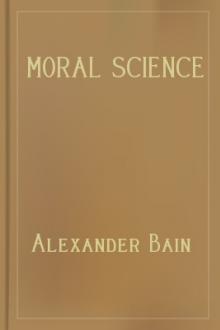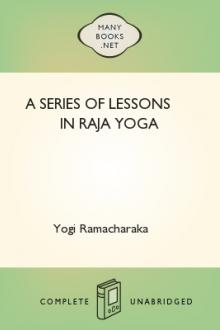Man's Fate and God's Choice by Bhimeswara Challa (feel good fiction books .txt) 📕

Read free book «Man's Fate and God's Choice by Bhimeswara Challa (feel good fiction books .txt) 📕» - read online or download for free at americanlibrarybooks.com
- Author: Bhimeswara Challa
Read book online «Man's Fate and God's Choice by Bhimeswara Challa (feel good fiction books .txt) 📕». Author - Bhimeswara Challa
The velocity of science-based technological change has run ahead of the ability of the human intellect to grasp, absorb, and adjust. Technology is letting us do things that once seemed like science fiction; from thoughtless navigation to limitless recollection, machines have made nearly every facet of our lives facile. But in doing so, they have also taken away skills that were once second-nature to the human. A growing concern is that technologies like the internet (and the general abundance of technology in our daily lives) may, in fact, be making us stupid — and that our dependency on technology will become so intense that, in the near future, our brain might lose even the meager cognitive power it now enjoys. Technological impact has another dimension. What used to take decades, if not centuries, from invention to application, has shrunk to a few years, leaving little or no time for assessing its implications and impact, often leading to a hasty and flawed decision making. Among the plethora of issues that confront mankind, one of them is the quality of ‘scientific decision making’, which is increasingly being shaped by the personal qualities of scientists. The irresistible appeal of ‘techno-science’ lies in the human mind’s irresistible attraction to the three ‘C’s — comfort, convenience, and control.
When we even think of the sacred, religion instantly crops up. The shape, form, and direction of religious activity in the world has become another issue with overarching implications. Religion has been a huge factor in human life, but the way it impacts modern life raises the question if it is a relic from the wild wilderness of our prehistoric past, when nobody had the faintest idea what was going on, or if it is an adolescent attempt to meet our irrepressible need to know, or even perhaps, if it is a pure something that is perverted in practice by the human mind. With the human mind now crossing hitherto uncrossed thresholds of life and death, religious fervor or fundamentalism has become a ‘sacred terror’, as reflected by the title of a book by Daniel Benjamin and Steven Simon (The Age of Sacred Terror, 2002). It is this very sacred terror that seems to be offering an outlet for some of the darkest shadows lurking deep inside the human consciousness. Since religious zealotry is clothed in a divine garb — like in the battle cry Deus Vult (‘God wills it’) of the First
Crusade, or Jihad in recent times — the hallucinating human mind, harboring malice and bolstered by real or illusionary religious victimization, has transformed the psychological profile of man and made him a ticking time bomb. Since no individual is a mental carbon copy of another, we do not know where the fuse is hidden, and when it is set to go off and with what effect. Religion can be and has been a powerful moral force, but also, when a ‘believer’ convinces himself that his religion is in peril or when any of its sanctified or sacred symbols — a pig or a cow, a statue or a forbidden picture — are parodied or defiled, the reach and the depth of the resultant ‘holy slaughter’ is awesome and awful. Whether or not religious terror is a perversion of the ‘spirit’ of every religion is beside the point, even pointless: the mind loves it, and who can stop the mind? It is said that there is never enough religion in the world to make people love one another, but just enough or plenty to make them hate one another. And that ‘hate’ can translate into horrendous behavior. And those who incite, encourage, revel, and rejoice in such ‘sacred’ terror are not freaks or sadists but ordinary folks. They are normal people who consider themselves to be ‘god-fearing’ and ‘good’ people, and religious leaders. They do not feel ‘bad’ or remorseful because they believe that they are doing ‘God’s work’. James Haught’s book Holy Horrors (1990), gives a gory historical account of holy human depravity. The historical evidence shows that to ‘appease’, to ‘please’, to ‘satiate’, to ‘beseech’ God, man has not stopped at anything: nothing is sacrosanct, no sacrifice or sacrilege is unthinkable, nothing is too degrading or demeaning. Underscoring the point that the history of religion is a history of horror, Haught quotes the words of a Christian cleric who boasted, after one of the Crusades, that ‘in the temple of Solomon, one rode in blood up to the knees and even to the bridles of horses’. And all that, in this view, was not barbaric; it was bolstered by the just and marvelous judgment of God! We cannot easily dismiss the current crop of zealots as another abominable aberration like the maniacs of the Middle Ages, or as expressions of localized lunacy of deranged or brainwashed bigots. They too are ‘human’, and that cause is religion; and every religion, every kind of faith, every culture has been privy to such horrors, which are not only bloodcurdling but even beyond our imagination. How can that which is deemed ‘sacred’ propel man to do such things to another human? Such is the sway and power of religion and science over the human mind that, tempting as it is, we cannot just leave them to their present motivation and momentum, and simply hope — like the character Wilkins Micawber in Charles Dickens’s novel David Copperfield (1850), — that man will somehow muddle through the crises that he faces, and that religion will, in a flash of divine insight or revelation, loosen its venomous fangs, or that science, triggered by a moral angst of scientists, will become a healing balm. The catharsis must come from within.
Religion, spirituality, and science — the struggle for supremacy Instinctively, we associate ‘sacred’ with religion, spirituality and the divine, and ‘secular’ with ‘morally neutral’ things relating to the physical, worldly and material matter and
science. After all that has happened in the name of religion, and after all that science has done to the human condition, it might be legitimate to ponder if anything that transpires under the signature of religion is any longer ‘sacred’, and if science (rather, what some scientists do for profit or power) is ‘safe’. We need fundamental rethinking on both fronts to harness their potential and power for the good of mankind. What constitutes ‘religion’ has long been a matter of both sacred and secular thought. While there is no unanimity, what perhaps one can broadly agree is that it is a body of thought and knowledge that makes us do or follow — or not do or not follow — certain procedures, symbols, rituals, worship, etc., that are drawn from the scriptures, traditions, and beliefs, often with supernatural or transcendental underpinnings; and that religion influences, among other things, the way we relate to a Supreme, Higher power, or to a God, or to afterlife. It is sometimes used synonymously with
‘faith’ or a ‘belief system’. Although most people identify religious impulses with God, the French sociologist Emile Durkheim wrote that one of the distinctive traits of religious thought is the division of the world into two domains, one containing all that is sacred, and the other containing all that is profane. Durkheim emphasized the social nature of religious thought and even argued that the sacred/profane dichotomy was not equivalent to good/evil: the sacred could be good or evil, and the profane could be either as well. In common usage, the shorthand for sacred is scripture. While every religious person swears by the ‘scriptures’, what he usually implies are the sacred books of his holy religion, as opposed to the false, if not profane, writings on which all ‘other’ faiths are based. It is this ‘double vision’ about scriptures that causes most problems. Some interject another category into this context — the sinful, those things that the scriptures expressly prohibit. Leaving aside the sinful side, ‘sacred’ is associated with religion and God; ‘secular’ with rationality, temporality and science; and ‘profane’ with the vulgar and the obscene. And then we have this rather elusive domain called ‘spirituality’ or spiritualism, which in one sense distinguishes itself as being none of the above; not science, not technology, not religion. Spirituality or spiritualism concerns itself with the ‘matters of the spirit’; it is the search to know our true selves, which is also to ‘know God’. In some countries like the United States, spiritualism has been the fastest-growing ‘religious group’ in the last ten years, and this movement denies any particular religious denomination or practicing affiliation. That is in one way encouraging (followers can become better human beings), and in another way dangerous (they can fall prey to pseudo-spiritualists and nihilist cults).
Science works in the world of knowledge, which is human; spirituality operates in the field of the inner world, which is divine. Spirituality is said to be about faith; and science, about fact. But both seek answers to the same questions, such as ‘what is life?’ Neither science nor spirituality has clear answers yet, but they both claim that it does not negate the validity of their observations and results. The Austrian physicist Erwin Schrödinger in his celebrated work What is Life? (1944), addressed the question “how can the events in space and time which take place within the spatial boundary of a living organism be accounted for by physics and chemistry?” and his ‘preliminary answer’ was that the “obvious inability of present-day physics and chemistry to account for such events is no reason at all for doubting that they can be accounted for by those scientists”. The same sense is shared by spiritualists. In the spiritual perspective, as described in all the great wisdom traditions, there are three levels of existence: physical, mental, and spiritual. Science has until recently (and barring some notable exceptions) denied the spiritual dimension. Even in regard to mental processes, science argued that they are simply biochemical processes germane to the brain itself. Hence, the only mode of knowing the real, it posited, was by observing the objective, physical world through sensory empiricism. But in the end, these are all metaphors intended to convey a sense of something or some idea that cannot be clearly defined. While the ‘modern mind’ looks at everything as an opposite of another, many indigenous cultures have had a more holistic view. They thought, felt and lived in unity with Nature — even in killing they were respectful. They had empiricism, and they had an intimate, profound, and sensitive relationship with Nature, in their beliefs, actions, and consequences. They emphasized kinship, interdependence, and reciprocity with Nature, as well as care, respect, and reverence for Nature.
Operationally, it is the practice of religion and the products of science that





Comments (0)